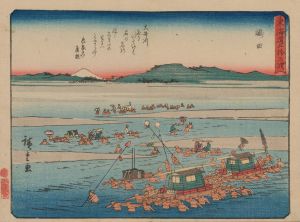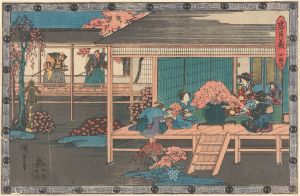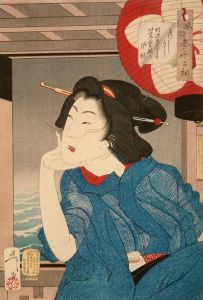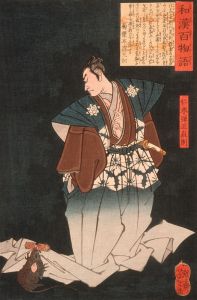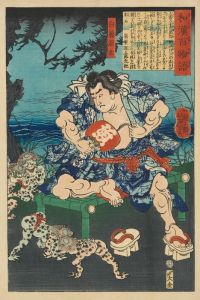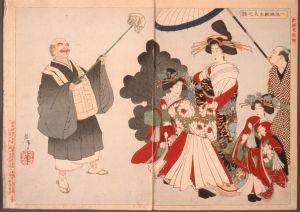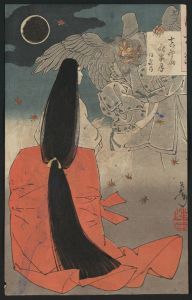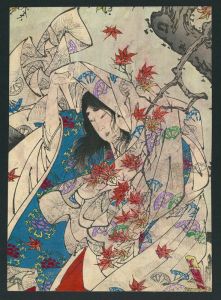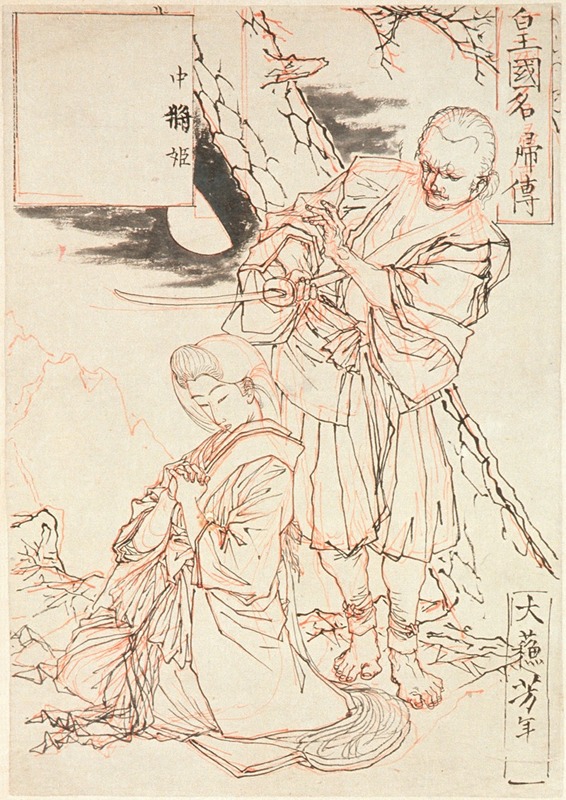
Chūjōhime
A hand-painted replica of Tsukioka Yoshitoshi’s masterpiece Chūjōhime, meticulously crafted by professional artists to capture the true essence of the original. Each piece is created with museum-quality canvas and rare mineral pigments, carefully painted by experienced artists with delicate brushstrokes and rich, layered colors to perfectly recreate the texture of the original artwork. Unlike machine-printed reproductions, this hand-painted version brings the painting to life, infused with the artist’s emotions and skill in every stroke. Whether for personal collection or home decoration, it instantly elevates the artistic atmosphere of any space.
Tsukioka Yoshitoshi was a renowned Japanese artist of the late Edo and early Meiji periods, known for his innovative and dynamic ukiyo-e woodblock prints. Among his many works, Yoshitoshi created a series of prints that depicted historical and legendary figures, one of which includes Chūjōhime. However, specific information about a print titled "Chūjōhime" by Yoshitoshi is not widely documented or recognized as a standalone piece in his oeuvre.
Chūjōhime is a legendary figure in Japanese folklore, often celebrated for her piety and miraculous deeds. She is best known for her association with the Taima-dera Temple and the creation of the Taima Mandala, a significant Buddhist artifact. The story of Chūjōhime is a tale of devotion and spiritual enlightenment, which has inspired various forms of Japanese art and literature over the centuries.
Yoshitoshi's work frequently explored themes of beauty, violence, and the supernatural, often drawing from historical and mythological sources. His prints are characterized by their bold compositions, dramatic use of color, and intricate detailing. Yoshitoshi's ability to capture the essence of his subjects made him one of the most influential ukiyo-e artists of his time, bridging traditional Japanese art with the emerging modern sensibilities of the Meiji era.
While there is no specific record of a print solely dedicated to Chūjōhime by Yoshitoshi, it is possible that she may have been included in one of his series that featured historical or legendary figures. Yoshitoshi's series such as "One Hundred Aspects of the Moon" and "New Forms of Thirty-Six Ghosts" often included a wide array of characters from Japanese history and folklore, depicted with his signature style and attention to narrative detail.
Yoshitoshi's work remains highly regarded for its artistic innovation and cultural significance. His prints are celebrated for their ability to convey complex emotions and stories, often reflecting the societal changes and tensions of his time. As an artist, Yoshitoshi was deeply influenced by the rapid modernization of Japan and sought to preserve traditional Japanese themes while also experimenting with new artistic techniques.
In conclusion, while there is no specific information available about a print titled "Chūjōhime" by Tsukioka Yoshitoshi, his body of work often included legendary figures such as Chūjōhime within broader series. Yoshitoshi's legacy as a master of ukiyo-e continues to be appreciated for its historical depth, artistic brilliance, and cultural resonance. His prints remain a testament to the rich tapestry of Japanese folklore and the enduring power of visual storytelling.





